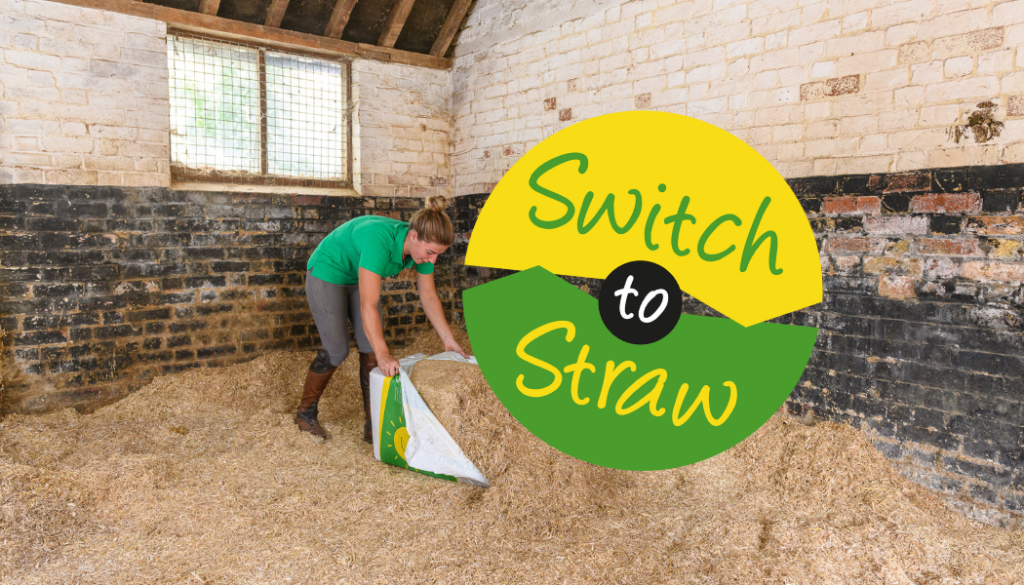
Why Choose Chopped Straw Bedding?
There is increasing demand for horse bedding that is both environmentally sustainable and affordable.
Numerous studies and voices within the equine industry are advocating the use of straw bedding to improve the welfare of stabled horses.
Read on to find out why you should Switch to Straw!
Straw Bedding Is Highly Sustainable
Straw is an annual by-product of grain crops (wheat, oilseed rape). It’s grown every year by British farmers and sun-dried naturally in the field.
In contrast, wood shavings come from pine trees that can take between 25 – 30 years to reach harvestable size, and often require coal-powered kiln drying. Waste wood from mills can be of variable quality and origin.
Unlike wood, straw quickly composts in the muck heap, recycling nutrients into a fertiliser for use on fields or in the garden. Studies have even shown that manure made with straw bedding has superior composting characteristics than the other bedding types, including wood shavings (1).
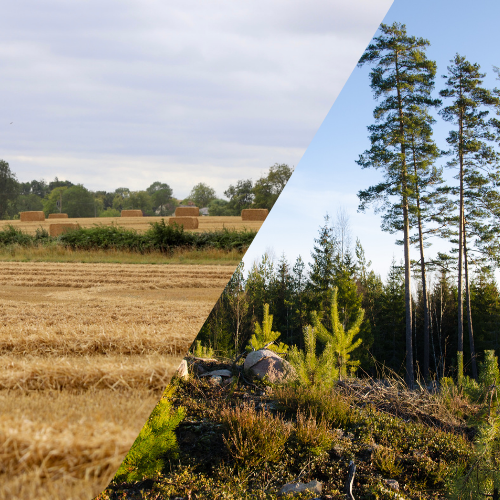
Chopped Straw Bedding is Hygienic and Practical
Chopped straw bedding is easy to use and muck-out. Compared to traditional long-stalk straw, chopped straw is packaged in easy-to-handle wrapped bales, and each bale goes a long way, requiring less frequent topping-up.
You’ll remove less bedding each day because wet patches are more contained and droppings are easily separated, leading to smaller barrow-loads, and smaller muck heaps.
You can still make banks with chopped straw, and it’s suitable for all bedding systems, including using on top of mats, or in-conjunction with straw pellets for extra absorption.
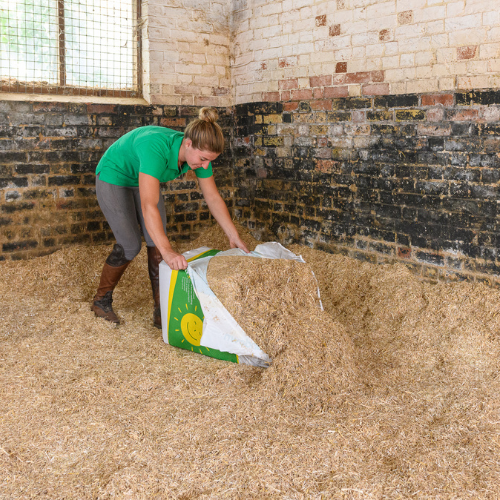
Edible Bedding Supports Horse Welfare
Straw bedding can contribute to improved welfare for stabled horses, providing opportunities for horses to exhibit natural browsing and selection behaviour for forage, alongside their hay/haylage ration.
Continual access to forage helps to keep their digestive systems healthy, and too little fibre and not being able to chew increases stress and is also a risk factor for gastric ulcers.
A recent study showed that when hay is fed restrictively, horses bedded on straw may be less stressed, and exhibit less aggressive behaviours compared to horses on non-edible bedding (2).
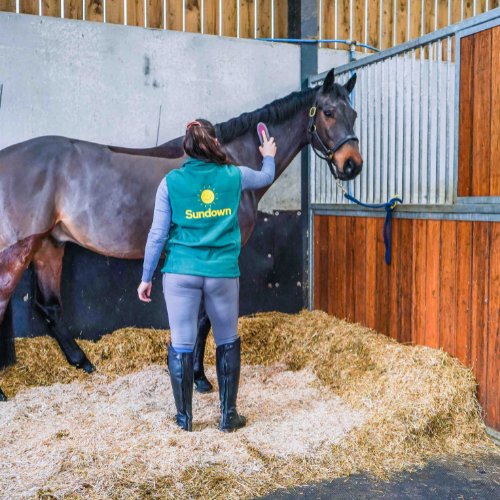
It’s safe for horses to consume some straw bedding
Eating straw bedding is increasingly being recognised as a positive activity for the horse to do (3) and they seem to ‘appreciate’ having different forages to choose between (4).
Recent studies are recognising the benefits of straw, while noting that the risk of colic from consuming straw is low for most horses and ponies (5).
You may also find it reassuring to know that there have been studies exploring the use of straw as a forage replacer. In these studies, up to 50% of the horses’ forage was replaced with straw and no adverse effects such as colic or ulcers were reported (6).
Whilst straw might not be appropriate for horses with compromised dentition or those that have a tendency to gorge on it, there are lots of benefits both from a welfare and a digestive health perspective to bedding on straw.
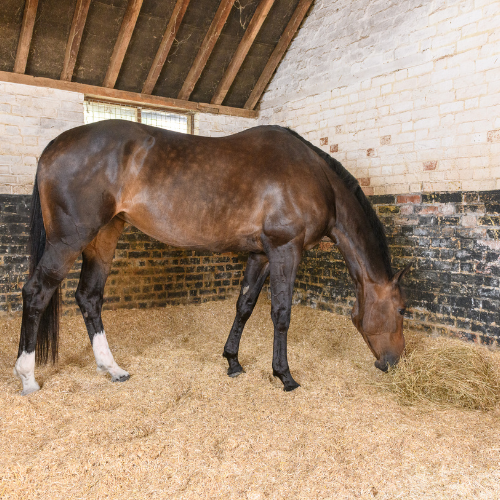
Lou Robson: Why Sundown Green is the Best Choice for My Horses
Lou Robson of Thoroughbred Dressage explains why she keeps coming back to Sundown Green to bed her yard of dressage horses for their comfort and welfare.
Read Lou’s Blog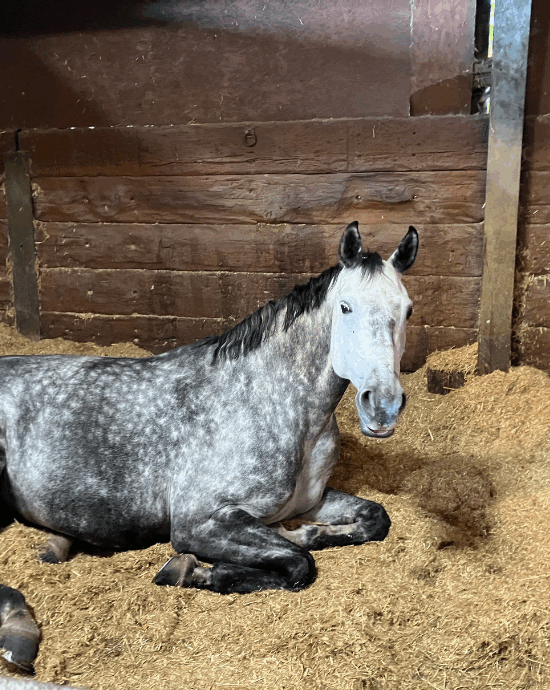
Did you know?
Here are some facts about Sundown’s straw bedding

Straw is one of the most sustainable bedding types
At Sundown we use 100% locally grown, sun-dried, British wheat straw for our chopped straw bedding. This by-product of the wheat harvest makes use of the whole crop – nothing is going to waste.

We extract the dust TWICE before baling
Our chopped straw bedding has very low dust and impurities. Our specialised vacuum de-dusting process is performed twice, and removes nearly all dust and impurities before baling. This creates a hygienic, very low dust environment which benefits both horses and humans.

Our straw is naturally sun-dried!
No fossil fuels were burned in the drying of Sundown’s straw before it gets made into bedding. The straw is dried naturally in the sunshine before being baled and delivered to our stores.

There’s no wood dust in our pellets!
Sun-e-bed straw pellets are made from the same high-quality straw used to make our chopped straw bedding. There’s no wood dust of dubious origin in our Sun-e-bed soft straw pellets – just high-quality British straw!
Discover Sundown Green

Sundown Green uses 100% British, best quality wheat straw. The straw is chopped and de-dusted (twice) before baling, with added food-grade eucalyptus fragrance. Sundown Green is ideal as an edible bedding, being high in fibre and low in energy and protein. It’s also highly practical and environmentally sustainable.
>> Find out more
Frequently Asked Questions
There is little, if any, published research showing a direct causal link between horses browsing on straw bedding and impaction colic but there are an increasing number of published studies showing positive benefits for the horse’s welfare from being able to browse on straw bedding.
Horses’ digestive systems have evolved to digest highly fibrous materials, and long periods without fibre ingestion can increase the risk of gastric ulcers and may cause considerable frustration. Edible chopped straw bedding is increasingly recognised by vets and researchers to be a form of stable enrichment, which encourages natural browsing and selection behaviour and supports gut health by reducing periods when there is no fibre consumed.
For most horses receiving typical amounts of other forages such as grass hay or haylage, the amount of bedding consumed would not be sufficient to present a risk to their health.
For horses and ponies on very limited amounts of forage, such as for weight management reasons, it is recommended to introduce them to a straw bedding gradually and monitor their eating behaviour closely. This can be done by putting a small amount of straw bedding into an area of the stable and monitoring whether any is consumed or the new straw bedding can be mixed with the existing bedding.
The novelty of a new bedding is likely to wear off and so starting with small amounts for a few days and then reviewing is a sensible approach. If you have any concerns then always discuss with your vet before trying.
Studies have shown that even when straw is included at up to 50% of the total forage ration, it does not result in ulcers. In fact, researchers exploring the welfare of stabled horses, suggest that bedding on straw is beneficial as it means the horses can eat for longer and satisfy their inherent need to chew. The additional benefit of this is that the more the horse chews, the more saliva they produce which is beneficial in buffering the pH of their stomachs, and hence reduces the risk of ulcers.
Traditional farm-sourced baled straw (‘long straw’) can vary in quality depending on the season, the weather, and how it is stored.
The straw selected for Sundown Green is high quality, we bale a lot of our straw off the fields with our own machinery to ensure we only have the best. Additionally, every piece of straw that enters our factory is de-dusted twice in our unique vacuum process, resulting in very low dust and spores.
Our factory is accredited by FEMAS for the production of animal feed ingredients. You can be confident that if your horse eats some of its bedding, they are eating high quality, feed-grade straw.
Straw is low in energy and protein, and high in fibre. While it’s safe and beneficial for your horse to browse a little of their bedding, eating large quantities of bedding could increase their overall calorie intake but a lot would have to be consumed to result in noticeable weight gain.
If you have a horse on a restricted diet, talk to your vet or nutritionist about the value of using straw bedding, and how to calculate any consumption as part of their daily ration. To deter greedy horses who might be tempted to eat lots of their bedding, introduce it gradually, changing over a little at a time.
Each bale of Sundown Green, Yellow, and Purple horse bedding has a very small amount of food-grade (edible) eucalyptus fragrance added before sealing.
The fragrance we use is a scent only, and does not contain any plant extracts.
References:
- Keskinen et al, (2017) Recycling nutrients from horse manure: effects of bedding type and its compostability. Agricultural and Food Science, 26: 68-79
- Ruet et al, (2019) Housing horses in individual boxes is a challenge with regard to welfare. Animals. 9, 621.
- Kwiatkowska-Stenzel, A., et al (2016) The effect of different bedding materials used in stable on horses behavior. Journal of Equine Veterinary Science. 42, 57-66
- Baumgartner et al, (2020) Common feeding practices pose a risk to the welfare of horses when kept on non-edible bedding. Animals. 10, 411
- Dosi et al, (2020) Inducing weight loss in native ponies: is straw a viable alternative to hay? Veterinary Record, Oct 17;187(8):e60
- Jansson et al, (2021) Straw as an Alternative to Grass Forage in Horses—Effects on Post-Prandial Metabolic Profile, Energy Intake, Behaviour and Gastric Ulceration. Animals. 11.
Find your nearest stockist
Enter your postcode to find your nearest stockist.